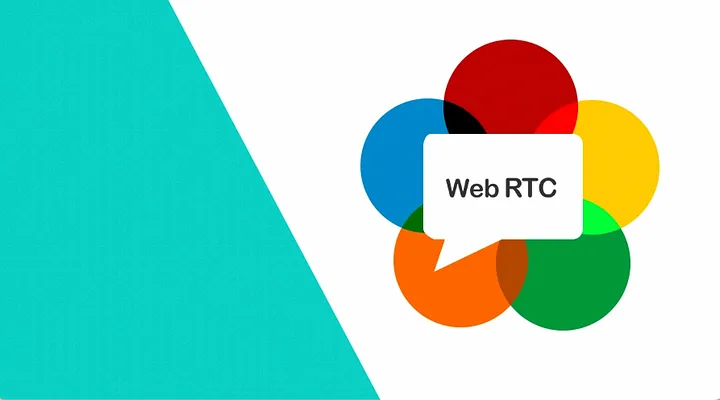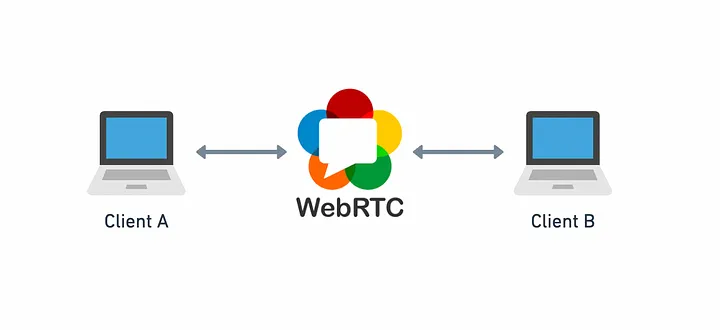Exploring WebRTC: Bridging Real-Time Communication on the Web

What WebRTC (Web Real-Time Communications) is?
WebRTC, an open-source initiative, allows for the implementation of real-time communication for voice, text, and video directly within web browsers and devices. It equips software developers with JavaScript-based application programming interfaces (APIs) to facilitate this functionality.
These APIs allow developers to establish peer-to-peer (P2P) interactions among web browsers and mobile apps, ensuring seamless operation regardless of the format of the content, be it audio, video, or text.
WebRTC facilitates the immediate exchange of data in real-time, eliminating the necessity for bespoke interfaces, additional plug-ins, or dedicated software to integrate with browsers. By merely accessing a webpage, WebRTC offers the potential for immediate audio and video communication.
How does WebRTC work?
WebRTC leverages JavaScript, APIs, and HTML (Hypertext Markup Language) to integrate communication capabilities directly into web browsers. Its aim is to simplify the process of audio, video, and data exchange between browsers for users and developers alike. WebRTC is compatible with the majority of prominent web browsers.
WebRTC APIs perform several key functions, including accessing and recording video-, audio- and text-based data from devices to initiating, monitoring and ending P2P connections between devices via browsers and facilitating bidirectional data transfer over multiple data channels.

Typically, WebRTC facilitates direct connections between users by enabling the exchange of real-time audio, video, and data directly between their devices through peer-to-peer (P2P) communication. However, when users are on different Internet Protocol (IP) networks with Network Address Translation (NAT) firewalls that block real-time communication, WebRTC can work alongside Session Traversal Utilities for NAT (STUN) servers. This assists in converting a private IP address into a public one, making it possible to establish peer connections.
Yet, some networks are highly restrictive and not even STUN servers can facilitate the translation of IP addresses. Under such circumstances, WebRTC employs Traversal Using Relays around NAT (TURN) servers, which act as intermediaries to relay traffic between users, thereby allowing for connection establishment. During this process, the Interactive Connectivity Establishment protocol determines the most effective pathway for the connection.
Audio and video files need to be compressed before transmission because of their substantial size. Additionally, media obtained through a peer connection requires decompression. WebRTC uses a codec process to do this.
What is WebRTC used for?
WebRTC aims to enable peer-to-peer (P2P) communication in real-time across the internet. Its applications are varied and include, but are not limited to:
- Video calling platforms like Zoom, Microsoft Teams, Slack, or Google Meet utilize WebRTC for conducting video chats and meetings.
- WebRTC is utilized across various sectors such as healthcare, surveillance, monitoring, and the Internet of Things. In the realm of Telehealth, for instance, WebRTC allows physicians to carry out online consultations with patients via a web browser.
- WebRTC serves as a linkage mechanism between browsers and security cameras within the realm of residential and commercial security and surveillance.
- WebRTC is heavily used for real-time media.
- WebRTC facilitates the essential connectivity between teachers and learners in virtual learning environments.
A multitude of these scenarios are also compatible with web interface utilization, including the ability to embed IP camera into a webpage
Examining the Advantages and Disadvantages of WebRTC
WebRTC brings with it both benefits and drawbacks for businesses.
Some of the benefits of WebRTC include:
- reduces the manual integration efforts required by IT departments;
- allows for dynamic adjustment of communication quality and network resource allocation;
- enjoys broad support across major browsers such as Google Chrome, Mozilla Firefox, and Safari;
- is compatible with any OS given browser support for WebRTC;
- eliminates the need for external plugins or components; and
- is available at no cost as open-source software.
Some drawbacks of WebRTC include:
- requires users to set up peer-to-peer connections, which may strain bandwidth;
- may incur high maintenance costs due to the need for robust servers;
- lacks definitive security and privacy regulations, placing the burden on IT to meet organizational standards;
- does not have established quality of service norms, potentially leading to variable audio or video quality over the internet.
WebRTC Security Considerations
WebRTC employs encryption for all of its software components, and it mandates the use of secure contexts through HTTPS or localhost for its APIs. However, despite these security measures, certain security concerns remain that WebRTC developers need to address. The standard does not define specific signaling processing techniques to exchange metadata, leaving it to developers to choose appropriate security measures and ensure their compatibility with WebRTC.